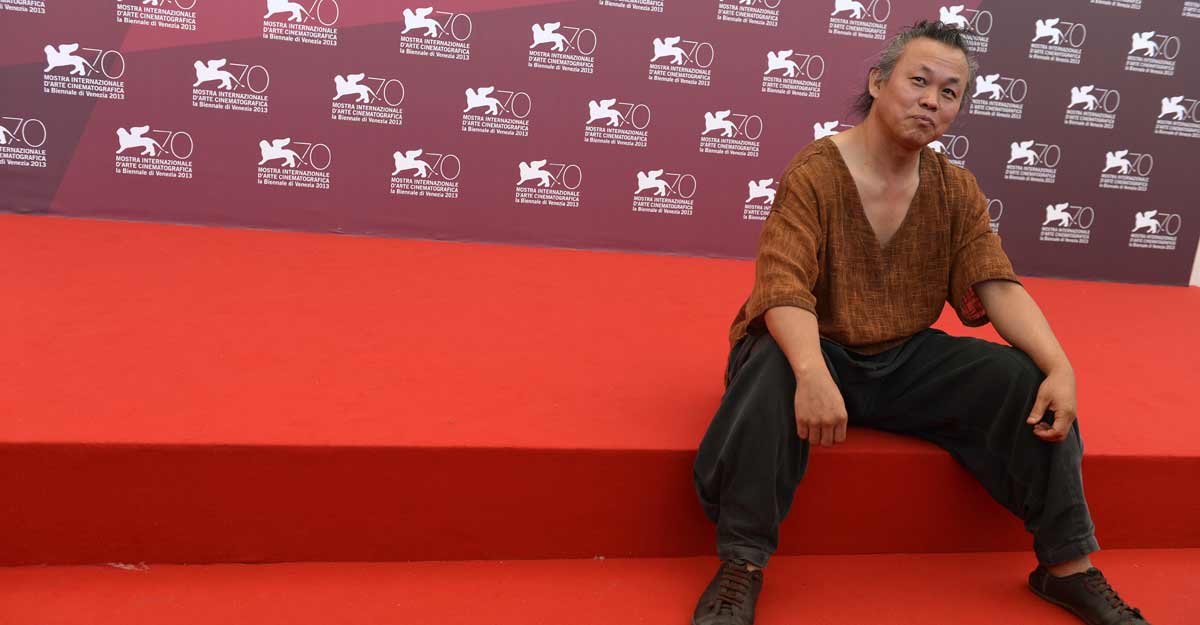Kim Ki-duk: The man who took our breath away

Mail This Article
Upon finishing a short introduction to the Malayalam film, "Dear Kim", an amateur video film in the form of a letter to Kim Ki-duk in 2013 at the South Korean Cultural Centre in Delhi, the Director of the Centre asked me, "Why Kim Ki-duk? We have a lot of films which are pleasant and positive and yet why is it that your home state loves Kim Ki-duk?". To answer that question, I perhaps needed to map out an entangled history of film festivals, the Malayalee's hunger for consuming world cinema and its ever-shifting world maps. The question which I never got back to answer completely stares at me once again as Kim Ki-duk bids his final farewell in Latvia. Kim Ki-duk, is a pulsating memory for a generation of Malayalees who flocked to the annual pilgrimage of International Film festival of Kerala (IFFK) in the 2000s.
Self-taught in filmmaking, Kim Ki-duk started making films in the latter part of the 1990s, generating a cult following in Europe in the 2000s, while failing in the Korean box office. Polarising the audience in the contradictory pulls of distilled serene landscapes on the one hand and frustrating sex and violence on the other, his films started acquiring a new voice down the years. While his early years of brutal allegories, were decidedly marked by a focus on the marginalised, delinquent and the outcast through excruciating mutilations ( The Isle 2001) violent expositions of social relations, the latter films started glancing at the more intimate, interiority of human life, albeit in a pitch-black tone. Take one of Kim's widely watched films, "Spring, Summer, Fall, Winter . . . and Spring", which A C Scott of New York Times reviewed as "exquisite" and "seems less a modern work of art than a solid, ancient object that has always been there, waiting to be found". Lyrical, intense and theatrical all at once, his films were increasingly viewed as infused with Buddhist philosophical explorations.
Anti-mainstream in aesthetic, much of the auteur's work effortlessly positioned obverse times like the past and the future, forms like melodrama and farce. In "Time", one of Kim's most popular films in South Korea, he holds the film in the present. At the same time, the protagonist explores a future, a time yet to come through her plastic surgeries and in the process rapidly pushes the present into a dissolving past. Part comedy, part romantic melodrama, the film explored immortality in astounding simplicity. Transformative encounters that signal transcendence emerged as a decisive trope in The Samaritan Girl (2004) and revenge and redemption (Bad Guy 2002, Pieta 2013) characterised this second and mature phase of Kim as exploring intangibles like Buddhist ethics, existential being and potentials of enlightenment.
Neither Kim's aesthetic landscape nor his philosophical enquiry would fully answer the Korean Cultural centre Director's puzzling question about the specific cinephilia of the Malayalam film festival circuit. What explains the cinephilia best is the short video film "Dear Kim" (2009) by Binu Kumar. "Dear Kim" presents the desperate attempts of three friends, who are daily wage workers from Idukki (the remote hill district in the western ghats) who missed all opportunities to watch the latest screening of Kim Ki-duk's film in the neighbouring towns. Dejected, they write an intimate letter to the South Korean auteur, explaining the cultural specificities of Kerala and the desire for his films. The letter, a visual palimpsest of Kerala's landscape and cultural life, shows a worldly place that consumes modern literature, art and cinema in its everyday cultural density.
Yet, Why Kim Ki-duk? "KimkiDuck", as he was fondly transliterated into Malayalam phonemes entered CD shops and village film festivals, zoomed in on the years of Kerala's film festival transitions, infusing it with altered digital imaginations. Film festivals, starting in 1965 and growing into a state-supported cultural event of magnificent scale with more than 10,000 registered film enthusiasts in the city of Thiruvananthapuram every December is more than an exhibition space. It is where films are discussed threadbare, dreams of film making are formed and nurtured, and a sociality gets started around the cinema.

The Kerala film festivals and film festival culture have received much attention from writers and scholars. Elsewhere I have written a long note in 2011 and writing about IFFK, Trisha Gupta called Kerala, "Godard's Own Country". Ratheesh Radhakrishnan, insightfully read IFFK as the space where other worlds are imagined. Reading this long arc of connections, we can see that Kim and his anti-aesthetic films entered Kerala's film festival circuit at a time when European film auteurs lost their hold.
In the Early 2000s, East Asian films and culture started getting embraced as adjacent cosmopolitan imaginations and the fluid movement of film DVDs and VCDs from East Asian markets energised the search for a different cine-aesthetics among the cinephiles. The vitality of the marginalised bodies and spaces, animated and animating movements, the visceral energy, ambiguous ethical terrain, cunning moral explorations all posed his cinema distinct from the familiar geographies of auteur cinema. I am sure more answers would emerge, more letters would get written, more apocryphal and anecdotal stories narrated-each committing a memory dear about "Dear Kim" to the Malayalee Cinephile. Adieu, "Kimkiduck"!

(The writer is faculty in Media Studies at the School of Arts & Sciences, Azim Premji University, Bangalore)

